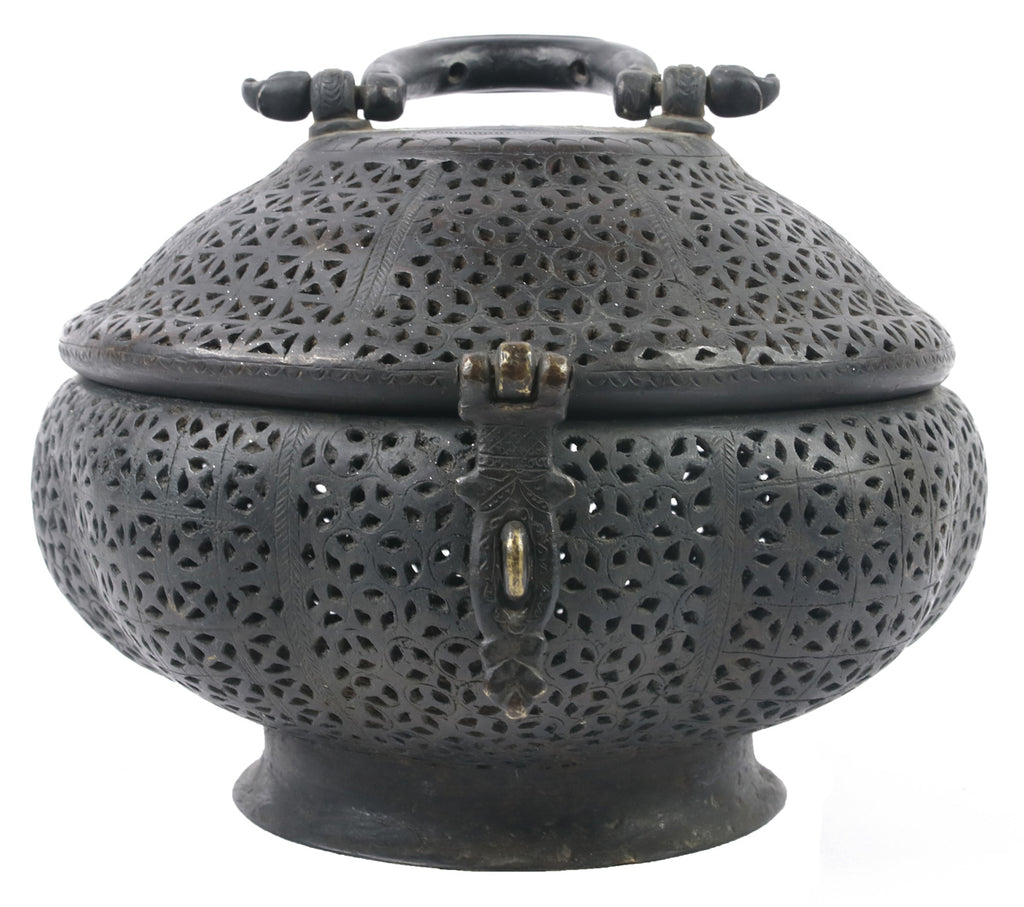- Home
- Pandan with Makara Handle
Loading...
Pandan with Makara Handle
All orders are insured for transit.
This item cannot be shipped outside India.
All orders are insured for transit.
This item cannot be shipped outside India.
Details
| Size: | 10 x 10.7 x 9.5 inches |
| Medium: | Bronze |
Description
The history of chewing paan dates back about 2,500 years and its beautifully crafted accessories elevated it to a level of ceremony, much like the Japanese and tea. The word pandan was coined during the Sultanate and Mughal period joining the Hindi word paan to the Persian suffix dan. “The offering of the royal paan to a courtier was a sign of extraordinary favour, and an even greater honour would be the offering of the betel container (pandan),” says Zebrowski.
Makara is a Sanskrit word which means "sea dragon" or "water-monster". Makara symbolizes water, the source of all existence and fertility. This could though also be a dragon as “in the medieval Muslim world, the dragon was the most frequently represented fabulous beast. This applied across styles and media and in both sacred and secular contexts.”
-
Description
Read MoreThis is a large, Deccan or Mughal cast bronze pandan. The wide ribbed shape gives definition to the segmental alternating patterns of openwork. At the top of the domed lid is an engraved flower and a curved handle with Makara or dragon heads on either side. Boxes like this were used to keep paan, which consisted of slices of betel nut mixed with lime paste and wrapped in betel leaf. Comparable example can be seen in Mark Zebrowski's "Gold, Silver and Bronze from Mughal India", cat. 455a and b, p.267, which Zebrowski describes as “typical of the Persianate taste of the Deccan where the naturalistic floral ornament of Mughal India is notably absent.”
The history of chewing paan dates back about 2,500 years and its beautifully crafted accessories elevated it to a level of ceremony, much like the Japanese and tea. The word pandan was coined during the Sultanate and Mughal period joining the Hindi word paan to the Persian suffix dan. “The offering of the royal paan to a courtier was a sign of extraordinary favour, and an even greater honour would be the offering of the betel container (pandan),” says Zebrowski.
Makara is a Sanskrit word which means "sea dragon" or "water-monster". Makara symbolizes water, the source of all existence and fertility. This could though also be a dragon as “in the medieval Muslim world, the dragon was the most frequently represented fabulous beast. This applied across styles and media and in both sacred and secular contexts.”
-
Details
Size: 10 x 10.7 x 9.5 inches Medium: Bronze -
Returns
We accept returns within 7 days of delivery if the item reaches you in damaged condition. -
Shipping
Shipping costs are extra, and will be calculated based on the shipping address.All orders are insured for transit.
This item cannot be shipped outside India.
This item has been added to your shopping cart.
You can continue browsing
or proceed to checkout and pay for your purchase.
This item has been added to your
shopping cart.
You can continue browsing
or proceed to checkout and pay for
your purchase.
This item has been added to your wish list.
You can continue browsing or visit your Wish List page.
Are you sure you want to delete this item from your Wish List?
Are you sure you want to delete this
item from your Wish List?
























































































 View Full Screen
View Full Screen



